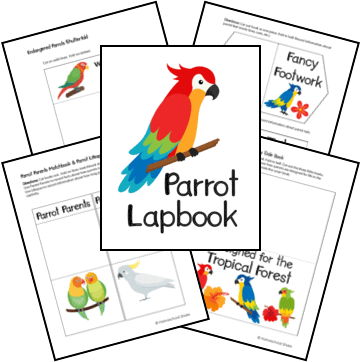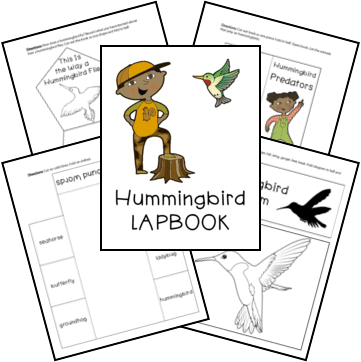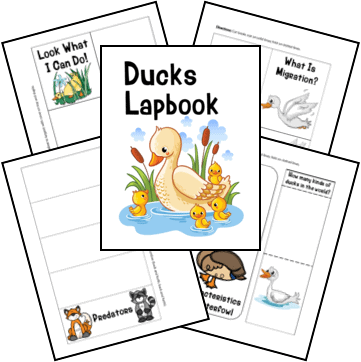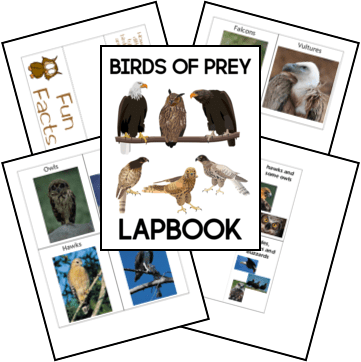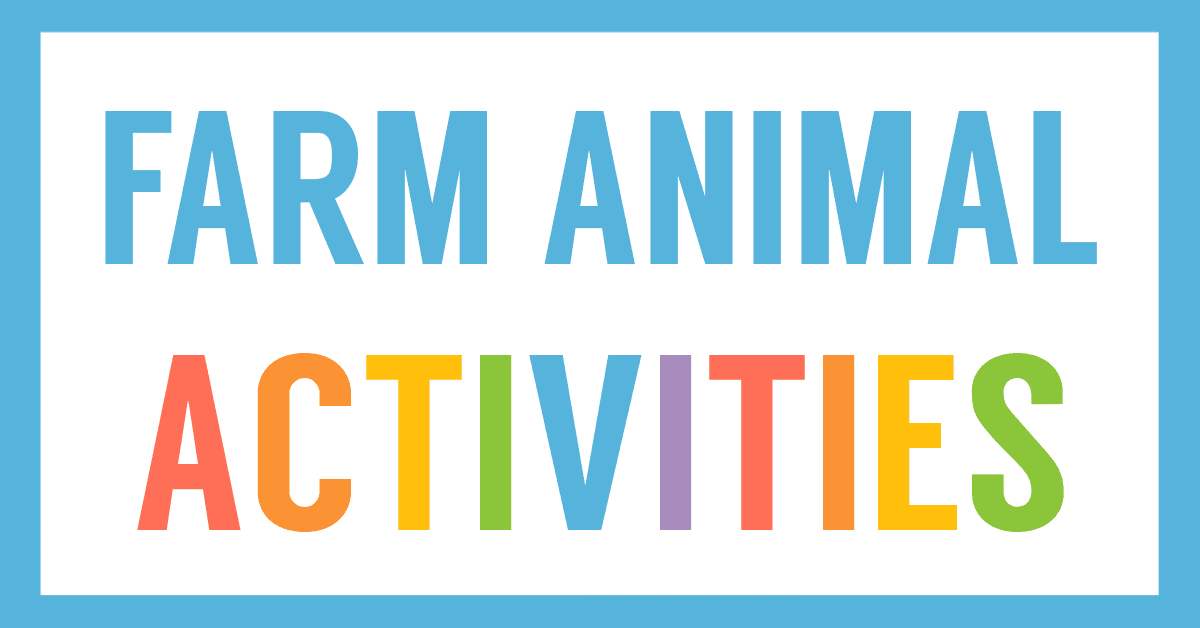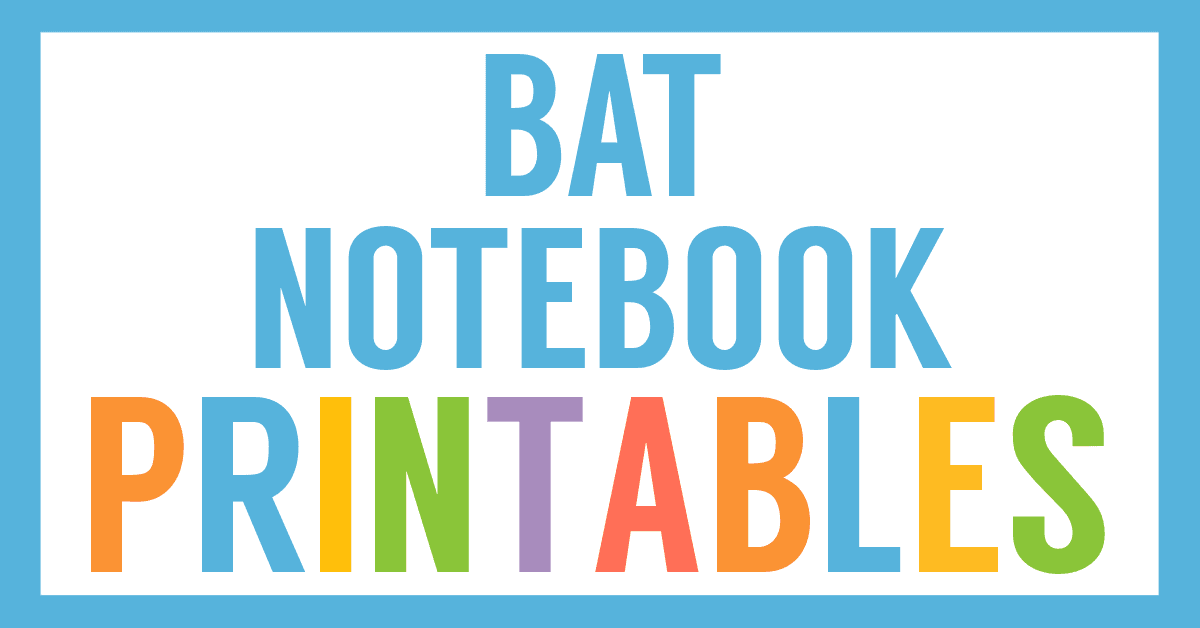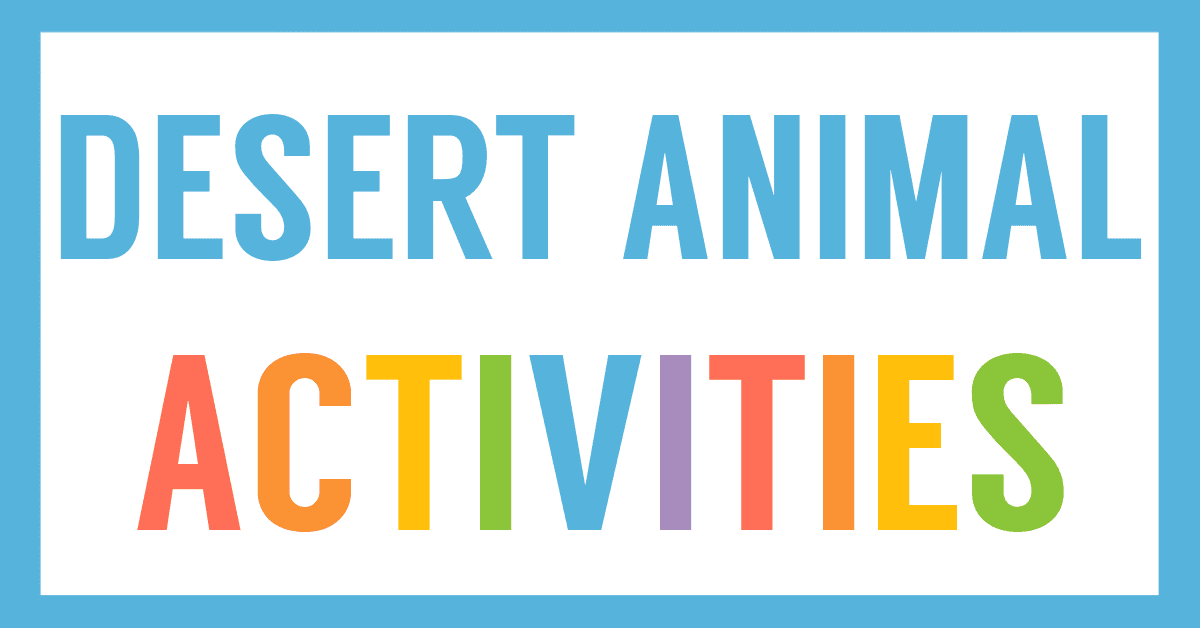Affiliate Disclaimer
We sometimes use affiliate links in our content. This won’t cost you anything, but it helps us to keep the site running. Thanks for your support.
Parrots are known for their brightly colored feathers, hooked beaks, and intelligence. The parrot family includes more than 350 species of parrots, parakeets, lories, lorikeets, cockatoos, and macaws.
Learn more about these bright, beautiful birds with our Parrots Lapbook.
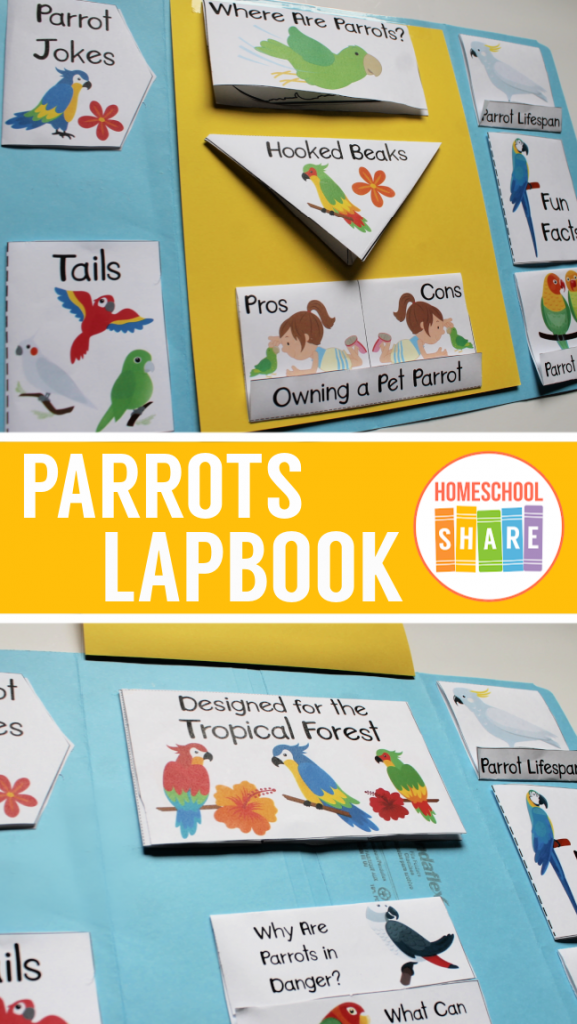
Parrots Lapbook Information
Here are some sample lessons from this animal lapbook:
Parrot Anatomy: Hooked Beaks
A trait all parrots have in common is a hooked, curved beak. They have different shapes and sizes for each parrot that are meant to help them eat different types of food. Some parrots have bills that are thick and tough to help them break apart and eat nuts. Other parrots have longer beaks that can be used like little shovels to dig up small plants. Some parrots have sharp, pointed bills to scrape plant pods of their seeds. Finally, other parrots drink nectar and eat pollen out of flowers, so their beaks are smaller and weaker from being unused.
Parrots: Designed for the Tropical Forest
Parrots have three specific three methods for living in the tropical forests: camouflage, strong feet, and strong muscles.
Camouflage: Parrots are vibrant and very colorful, but even though they may seem obvious to spot, they blend in with the bright leaves, fruits and flowers dotted in the tropical forests, confusing their predators and keeping the birds safe and camouflaged.
Muscles: Parrots have stout bodies and are actually very heavy when compared to other birds. Although their bones are hollow, they need strong muscles for flying and climbing around from tree to tree.
Feet: They also have strong feet, with four toes that can grab and carry fruits and nuts similar to how humans do. Two of their toes point forward, and two of their toes point backward.
Their feet and legs are so strong, parrots can use one foot to grab ahold of a branch and hang upside down, while eating a snack of seeds with the other at the same time.
You can grab a copy of the entire Parrots lapbook in an easy-to-print file at the end of this post.
Parrots Lapbook Printables
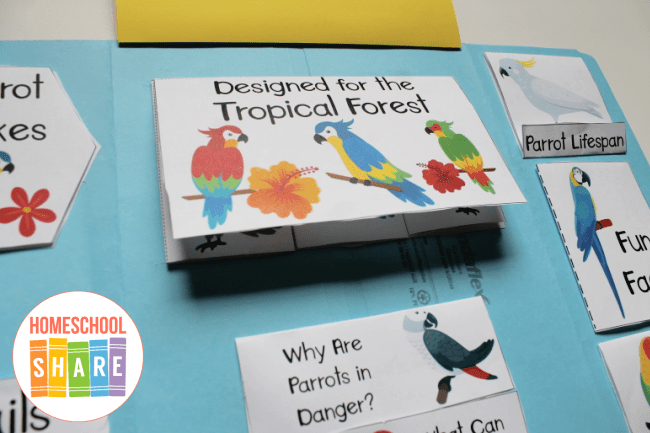
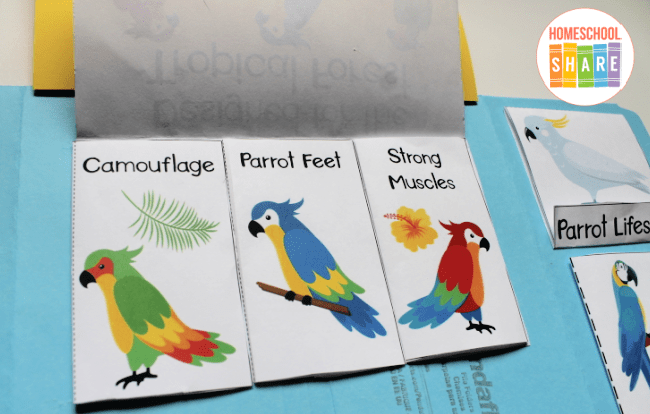
The following mini-books are included in this Parrots Lapbook:
- Designed for the Tropical Forest Side by Side Books
- Parrot Fun Facts
- Parrot Tails Simple Fold
- Parrot Jokes Simple Fold
- Hooked Beaks Envelope Book
- Owning a Pet Parrot Matchbook
- Parrot Nests Fan
- Parrot Parrots Matchbook
- Parrot Lifespan Matchbook
- Parrot Range Map Simple Fold
- Endangered Parrots Shutterfold
- Parrots Coloring Page
Parrots Lapbook Sample
This Parrots Lapbook sample was made with one file folder and a center extension (a piece of cardstock taped to the middle section of the lapbook).
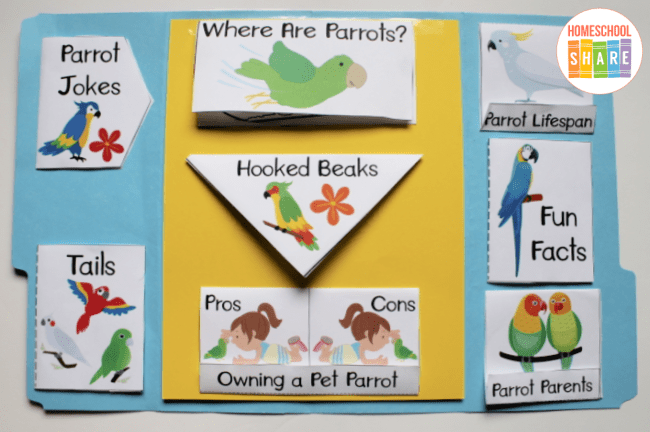
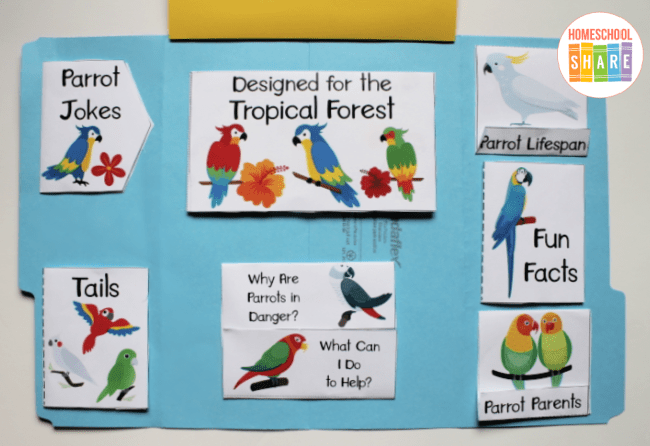
How to Get Started with Your Parrots Lapbook
Follow these simple instructions to get started with the Parrots Lapbook.
- If you want, go to your local library and check out books about parrots.
- Print the Parrots Lapbook.
- Choose and prepare the mini-books you want to use with your student.
- Enjoy a week of reading and learning all about bright and beautiful parrots!
Download Your Parrots Lapbook
Simply click on the image below to access your free parrots lapbook.
Explore More Bird Lapbooks
We have oodles of animal lapbooks that feature birds: ostriches, chickens, ducks, and so many more! Here are a few for you to explore:

